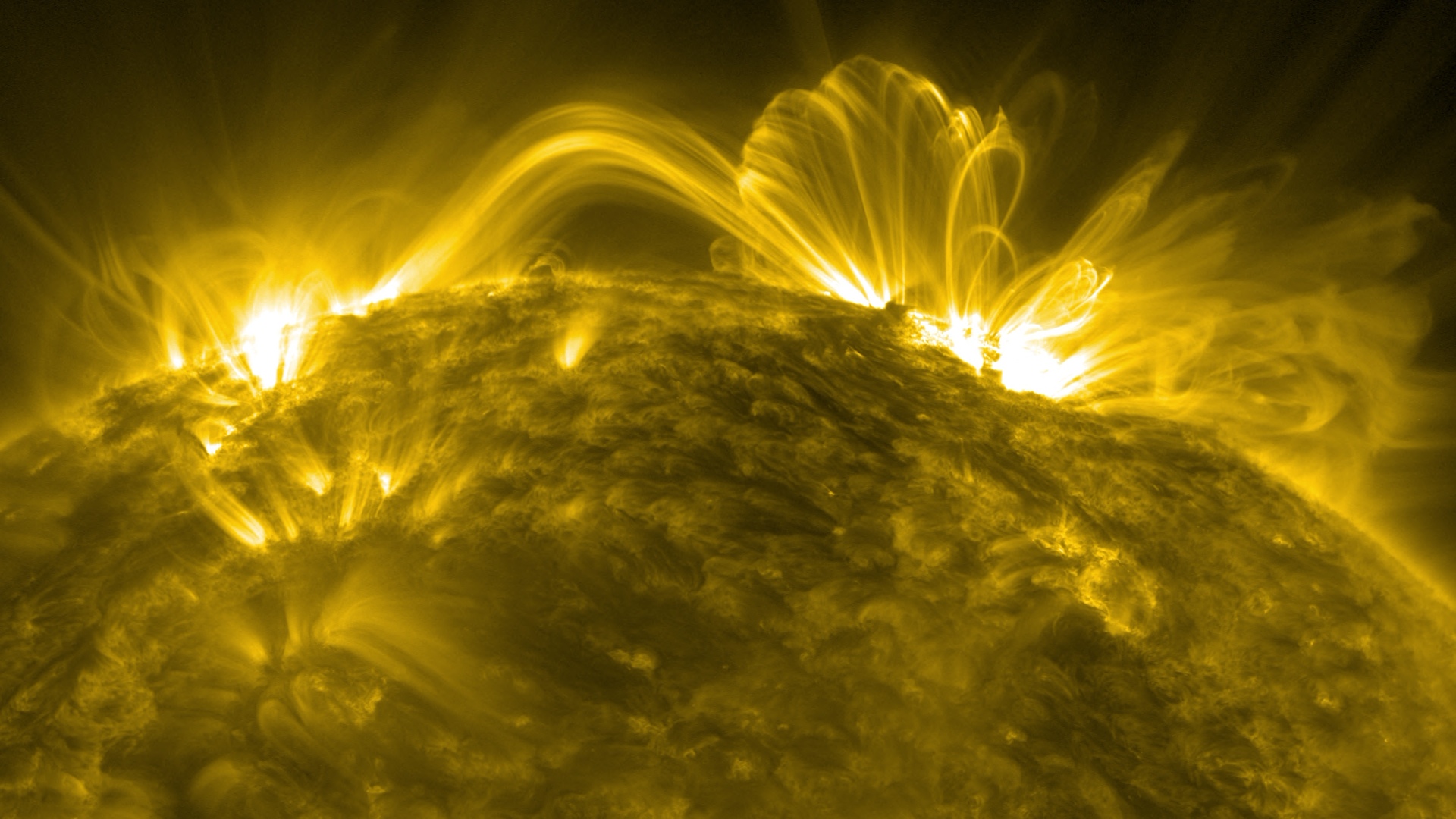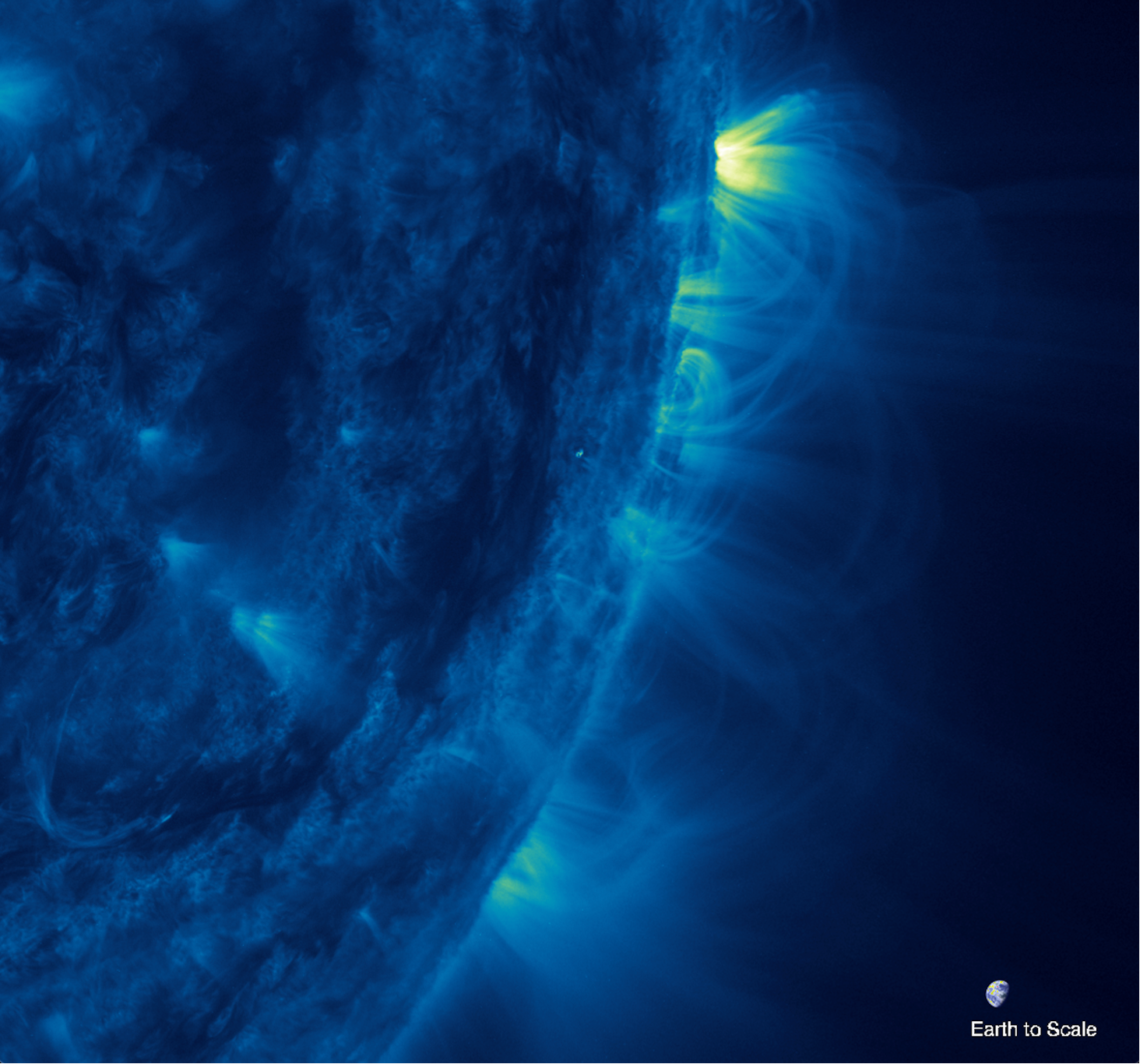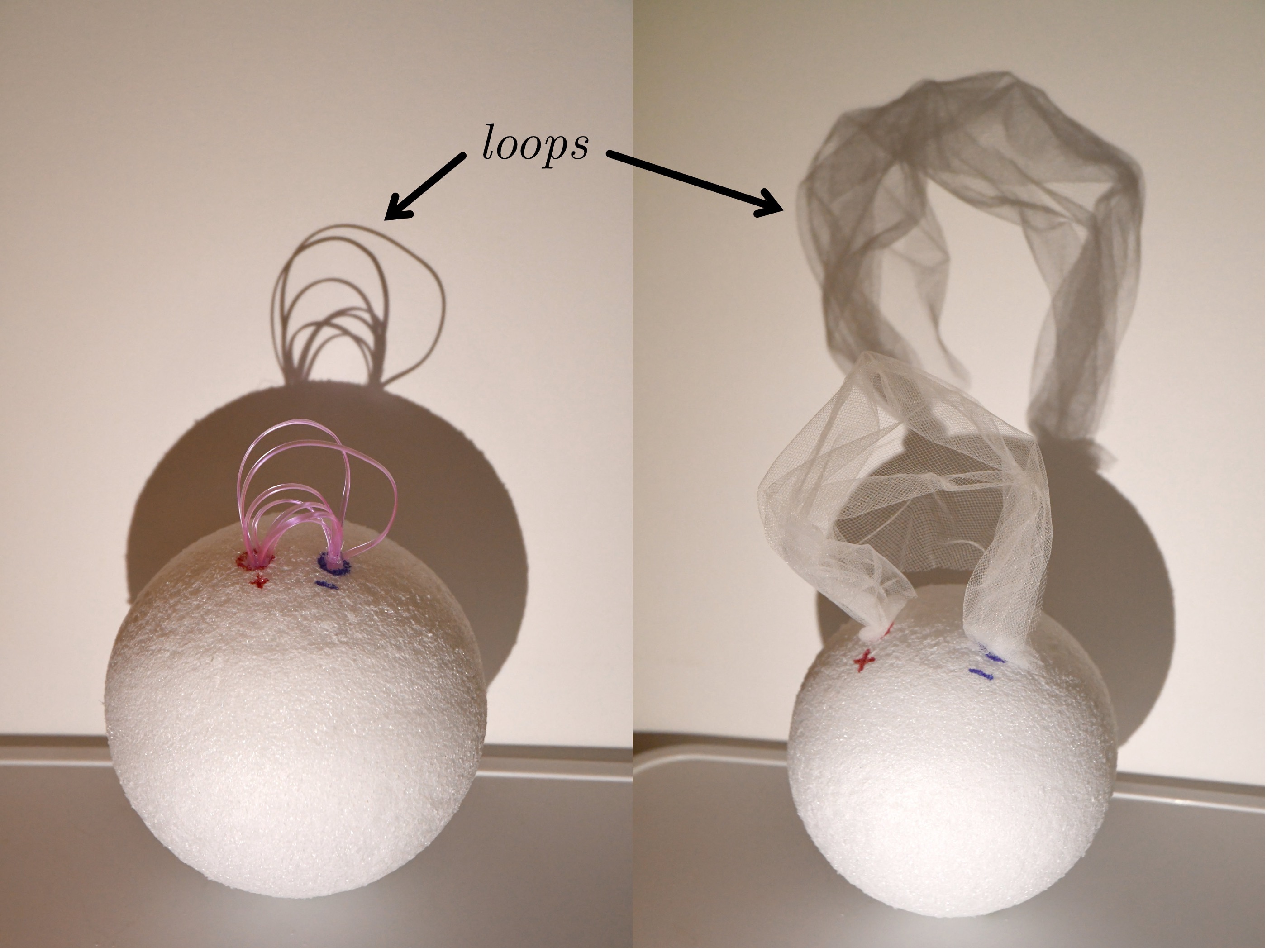Some messy 'coronal loops' on the sun may be an optical illusion
Scientists have been trying to solve this mystery for decades.

Some coronal loops that appear to emerge from the sun could actually be optical illusions created by folds or wrinkles in large sheets of stellar material called coronal veils, new research suggests.
If the finding is correct, solar scientists may be forced to rethink this solar phenomenon.
The new model could solve some lingering puzzles about coronal loops, which make the sun look like a messy ball of yarn. Additionally, the research could provide a 3D model of the phenomenon that researchers have been seeking for six decades.
Related: Watch 'coronal streamers' streak off the sun in close-up video from Parker Solar Probe
Conventional ideas surrounding coronal loops suggest that they are made from plasma — a dense gas in which atoms that have had their electrons stripped– flowing through magnetic "tubes" generated by the sun's powerful magnetic field. These magnetic tubes are invisible, but the plasma that flows through them, like water through a garden hose, is not. As a result, this plasma can be seen as loop-like 'threads' protruding from our star.
Though this "garden hose" model of coronal loops fits well with physics, there are some problems with it. For one, the sun's plasma grows thinner and dimmer moving away from its stellar core. Coronal loops, if composed of plasma, should show the same dimming with altitude, yet they remain consistently bright, the researchers explained.
Also, as the sun's magnetic field moves away from the star, this field expands to fill space. As a result, coronal loops should balloon out farther away from the sun if they are created by that field, yet they don't seem to do this.
Get the Space.com Newsletter
Breaking space news, the latest updates on rocket launches, skywatching events and more!
"They don't get nearly as wide as we think they should," Anna Malanushenko, a solar physicist at the National Center for Atmospheric Research in Boulder, Colorado, and lead author of a paper describing the findings, said in a NASA statement. "Most of them stay too thin, and we don't understand why."

These disparities led Malanushenko to question observations of coronal loops. After all, the sun's corona, its atmosphere, isn't a stranger to optical tricks.
For reasons researchers don't yet understand, the sun's corona is much hotter than the sun's surface, called the photosphere, despite being less dense. This makes the corona optically thin, or translucent, like fog. As a result, it is completely obscured by light from the photosphere. To investigate coronal loops, Malanushenko repurposed a 3D simulation of the sun that was originally created to study solar flares, and then wrote a computer program to observe this model.
This program took 2D "snapshots" of the simulated sun, revealing that this faux star had coronal loops, just like the real thing. But the simulation offered Malanushenko an opportunity that solar scientists don't get when imaging the real sun with telescopes: She was able to pause this simulated sun and peek at the 3D structures behind the artificial coronal loops, revealing a striking and unusual structure that was very different from hose-like tubes.
"I don't have words how to describe it, because this is not like anything that we see on Earth," Malanushenko said. "I want to say this formation looks like clouds of smoke, or maybe a veil or curtains that are wrinkled."
Malanushenko devised a simple physical spherical model with a looped veil of wispy material emerging from it to show how the illusion of a coronal loop could possibly be created by a veil.

The shadow cast by the model on a wall behind it represented the 2D images of the sun we get from telescopes. The folds and wrinkles of the veil created a pattern of dark and light strands that, in many ways, resembled real coronal loops.
But the shadow loops, in fact, were not real, Malanushenko said. Instead, they were caused by an optical illusion — an effect of projection. In this same way, folds in coronal veils cast similar 2D thread-like shadows on our telescopes like the folds in the model's veil cast on the wall.
But even if this hypothesis is correct, the idea isn't true of all coronal loops, Malanushenko said. Some definitely aren't illusions created by a coronal veil. Even in the simulated star, there were instances in which hose-like formations did build up.
"It would be exciting if we could say, 'Our thinking was all wrong; we have a totally new paradigm,'" Jim Klimchuk, a solar physicist at NASA's Goddard Space Flight Center in Maryland and co-author of the study, said in the statement. "It's not that way at all — but these veils, I'm sure they do exist, and now it's a question of proportions: Are veils more common, or are loops more common?"
In addition to determining this, solar physicists will have to discover what is creating the coronal veils.
The researchers described the findings in a paper published in The Astrophysical Journal.
Follow us on Twitter @Spacedotcom and on Facebook.
Join our Space Forums to keep talking space on the latest missions, night sky and more! And if you have a news tip, correction or comment, let us know at: community@space.com.

Robert Lea is a science journalist in the U.K. whose articles have been published in Physics World, New Scientist, Astronomy Magazine, All About Space, Newsweek and ZME Science. He also writes about science communication for Elsevier and the European Journal of Physics. Rob holds a bachelor of science degree in physics and astronomy from the U.K.’s Open University. Follow him on Twitter @sciencef1rst.









